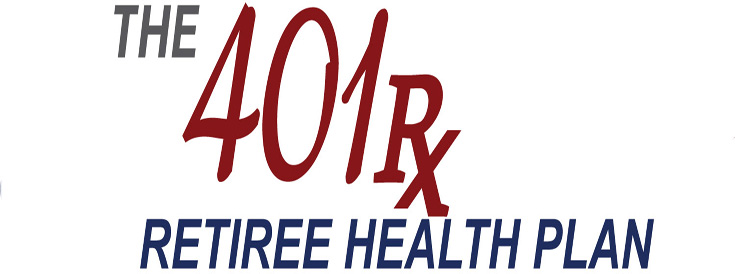A Whole New Way of Thinking about - Comprehensive Retirement Health Care
Plan Benefits
Employer contributions to the Plan create a fund from which benefits may be paid for employees and spouses. It is important to note that The 401Rx Plan® is based upon a “defined contribution” model, as distinguished from a “defined benefit” model. As such, the Plan does not promise that specific types of retiree health benefits will be provided or that specific type of insurance policies will be obtained. Rather, the Plan creates a reserve fund from which benefits can be paid, either directly to retirees as reimbursement, to health care providers, or through the purchase of insurance. Employers have the ability to create a reserve fund for any one, or more, of the six specified types of post-retirement health care benefits.
1. Medicare Part B Premiums
The amount reserved is the sum which is actuarially projected to be necessary at the selected Retirement age for an employee to pay Post-Retirement Medicare Part B Premiums.
2. Medicare Deductibles and Co-Pays
The amount reserved is the sum which is actuarially projected to be necessary at Retirement age for an employee to pay Post-Retirement medical expenses, which are not covered by Medicare Parts A and B. These are expenses typically covered through a Medicare Advantage or Medigap insurance policy.
3. Medicare Part D Premiums
The amount reserved is the sum which is actuarially projected to be necessary at Retirement age for an employee to pay for a Medicare Part D prescription drug insurance policy through such employee’s projected mortality.
4. Medicare Part D Deductibles and Co-Pays
The amount reserved is the sum which is actuarially projected to be necessary at Retirement age for an employee to pay Post-Retirement prescription drug expenses, which are not covered by a Medicare Part D insurance policy.
5. Vision and Dental
The amount reserved is the sum which is actuarially projected to be necessary at Retirement age for an employee to pay Post-Retirement vision and dental expenses, which typically are not covered under Medicare.
6. Long Term Care
The amount reserved is the sum which is actuarially projected to be necessary at Retirement age for an employee to pay for Long Term Care insurance expenses, which typically are not covered under Medicare. There are three different levels of Long Term Care funding available with The 401Rx Plan®:
Silver
This benefit would fund a LTC insurance policy which provides a benefit duration of five years, 90 day elimination period, monthly skilled nursing or assisted living facility benefit of $4,500, non-facility care (home care or adult day care) at 80% of the facility care rate, and informal care (care provided by family and friends) at 50% of the facility rate.
Gold
This benefit would fund a LTC insurance policy which provides a benefit duration of five years, 60 day elimination period, monthly skilled nursing or assisted living facility benefit of $6,000, non-facility care at 100% of the facility care rate, and informal care at 50% of the facility rate.
Platinum
This benefit would fund, based upon current costs, a LTC insurance policy which provides a lifetime benefit duration, 20 day elimination period, monthly skilled nursing or assisted living facility benefit of $9,000, non-facility care at 100% of the facility care rate, and informal care at 50% of the facility rate.
"By failing to prepare, you are preparing to fail."
Benjamin Franklin







